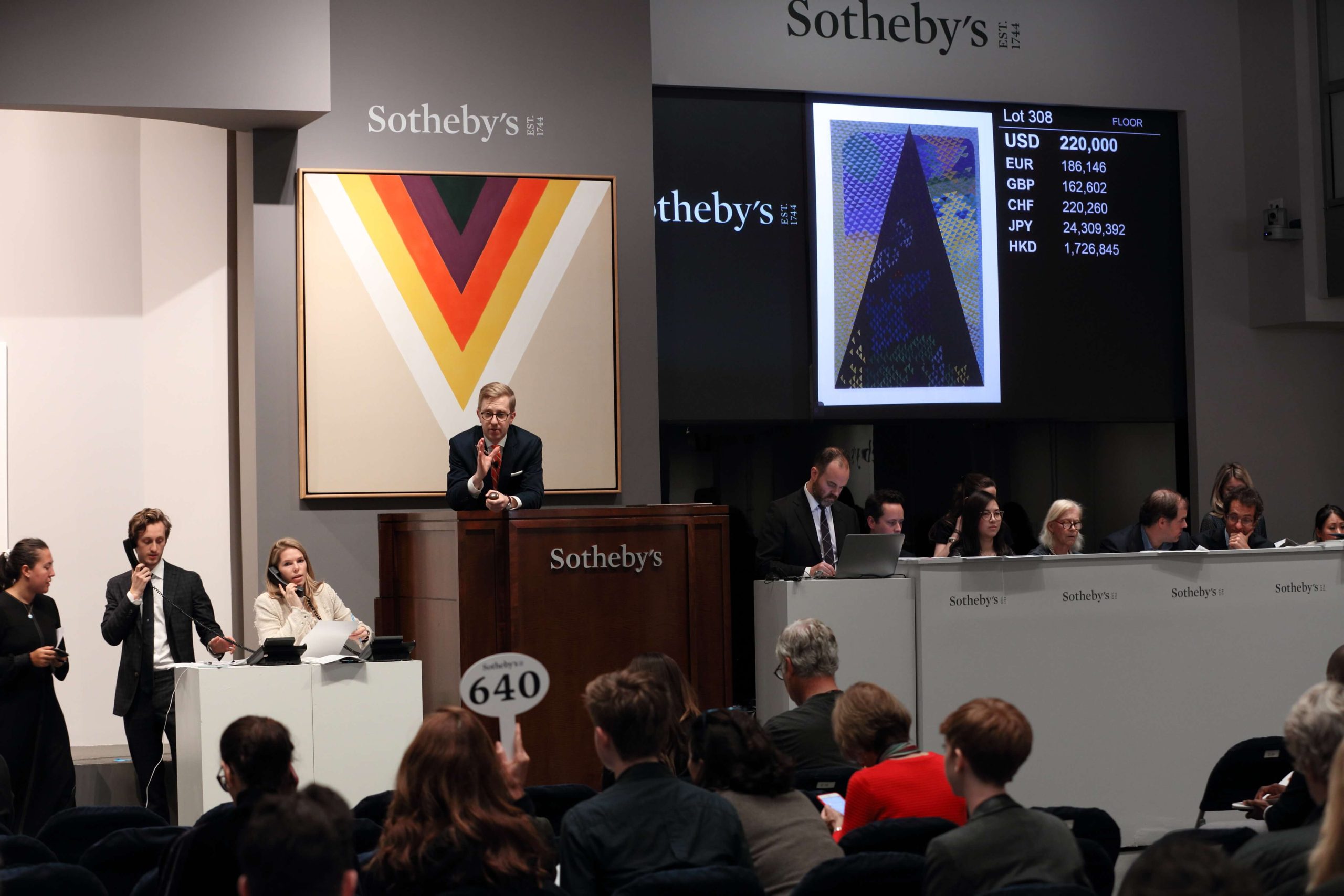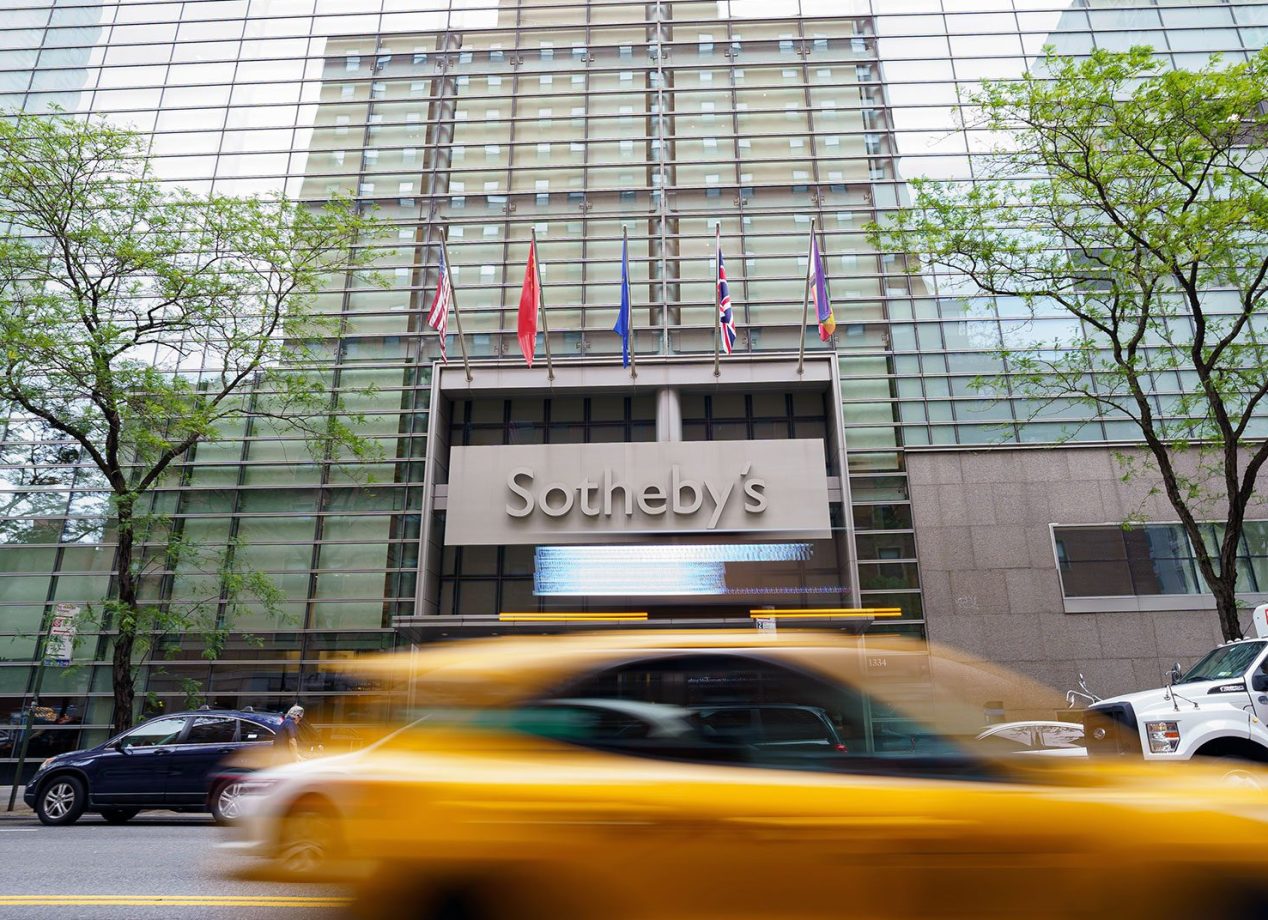Art market expert and course leader Joe Dunning shares his top tips and secrets for those enjoying New York City for the first time. From the magic of the art scene to hidden galleries and creative hotspots, discover NYC through an insider’s eyes. Get a glimpse behind the auction house rostrum and what to expect from the Sotheby's Summer Institute Art Markets in Action: Auction Houses course.
What’s one little-known fact about how auction houses operate that you love sharing?
I think the simplest point is that auction houses are about more than just auctions. Of course, we all associate auction houses with auctions. That’s what they’ve done for many years, in some cases for centuries, and it's what they continue to do. But it's not all that they do. In recent years, auction houses have branched out into private sales, retail, and e-commerce. They’ve done this to broaden their client base and increase revenue. It’s part of a wider trend where traditional barriers have broken down, and established players in the commercial art world have encroached on each other’s territory—a trend accelerated by developments in technology. So, even though we still refer to them as auction houses, they do much more than just auction. That's something anyone looking to understand the auction business and the broader commercial art world needs to grasp.
Describe the energy of an auction room when a highly anticipated piece is for sale.
The first thing I’ll say is that anyone can experience that energy. Most people don't realize that the vast majority of auctions are open to the public. You don't need to be a bidder to experience the bidding. So, if you're interested, I encourage you to go. Whether it's in your local town or a big city, find an upcoming auction, check it out, and feel that energy for yourself.
I’m lucky to have experienced it from both the auction room floor and the auctioneer’s rostrum. From the rostrum, I would always notice the rise in volume when an anticipated lot was coming up. That’s because colleagues would be on the phone with interested bidders, talking to them and preparing them for when the bidding opened. The energy itself can vary. My job as an auctioneer was to harness that energy, whatever it might be.
Sometimes, with a very popular lot, the energy is frenzied, and you can sense people’s eagerness to get started. In those moments, I might pause a second or two longer before beginning the bidding, just to heighten the anticipation even more. The idea is that releasing all that energy results in more enthusiastic bidding. Other times, the big lot is met with quiet; there isn’t much interest. Then, there’s a hush in the room, and my role is to reassure and project calm and confidence—whatever might be happening inside!
What’s the most surprising thing students might discover about auctions during the Sotheby's Summer Institute Art Markets in Action: Auction Houses course?
Art isn’t an investment! I always disappoint a few people when I say that. That’s not to say you can’t make money buying and selling art—you can, and many people do, whether or not that was their original intention. But when we see those graphs showing art outperforming gold, the stock market, or other assets, we’re only seeing a tiny, pre-selected sample of art. It’s the art that was sold at auction. Why did it sell at auction? Because it had value—someone wanted to sell it, and someone else wanted to buy it. What we don’t see are the countless pieces of art that don’t have value. That art never makes it to auction and doesn’t get counted in these too-good-to-be-true returns we hear about. If you’re passionate about art and have the means, then buy it! If what you buy increases in value, that’s great. If it doesn’t, you still have something you love hanging on your wall.

Image: Joe Dunning at Sotheby’s New York
Can you share an auction-related activity that students might participate in?
The students are going to take part in an auction! Not a real-life one—they don’t need to worry about accidentally buying something—but we’re going to create a mock auction in the classroom. The students will be given a collector profile and a budget and will decide which works they want to bid on and to what extent. I’ll act as the auctioneer, tempting them to bid higher than they planned, and their challenge will be to stick to their strategy. After the auction, the students will have the opportunity to step into the role of auctioneer themselves and auction off a piece of their choosing.
What’s one skill or insight students will gain that they can use outside the art world?
The commercial art world can be opaque; it isn’t easy for the uninitiated to see how it all fits together. That’s because information is often hoarded. Whether we’re in an auction house, a commercial gallery or another type of space, I always encourage my students to ask themselves what information is being given to them, what information is available but isn’t being given to them, and what information is not available. If they can figure that out, they can start to break down the scene into its component parts and understand how it all fits together. I think that’s a mindset that they can apply in all sorts of other scenarios.
If you could time travel, which historical art auction would you like to witness?
The Robert and Ethel Scull auction at Sotheby’s in 1973 holds a mythological status in the art world. It’s often credited with establishing the idea—whether accurate or not, and whether you agree with it or not—that art appreciates in value and is something to speculate on. I think the (often false) promise of untold riches is what draws some people to the auction world, and it would be fascinating to witness what that seminal moment was truly like. Plus, I’d love to see for myself if the story about Robert Rauschenberg punching Robert Scull outside afterward is true. And let’s be honest, some of the outfits from that era would have been unmissable!
What’s one thing about the art market that even seasoned professionals find fascinating?
You mean aside from how a banana can be worth $6 million?! I think what keeps people in the industry are the evolving trends. One moment, it’s all about figurative painting, then a few years later everyone wants abstraction. A particular style or movement might be considered passé, the market for it in the doldrums, then suddenly everyone wants to get their hands on those works and prices are sky-rocketing. What causes those shifts, who has a say in them, and how do people react? That’s what I think keeps the industry fresh for people who’ve been around for decades.
What are your favourite places in New York to visit for art inspiration?
Whenever I’m in town I call in at the New York Academy of Art, an art school that I’ve been involved with for almost a decade. It was founded in the 1980s by a group of people including Andy Warhol who wanted to preserve and pioneer the skills of figurative painting and drawing. If you’re lucky you can stroll around the artists’ studios and talk to them about what they’re working on. It’s amazing to see how broad the work is. For however many students in their studios, there are that many unique creative visions, all building on the same foundational skills.
Those skills seem to give them a way to express themselves, to realise their unique view of the world. Seeing that in action is such a gift, and something I look forward to each time I’m in town.
Are there any hidden gems or lesser-known galleries in New York that you recommend?
In recent years, many galleries—big and small, old and new—have opened in Tribeca. Now, when I visit the New York Academy of Art, I can also stop by galleries like Grimm, which represents artists such as Anthony Cudahy, Caroline Walker, and Hettie Inniss. Or James Cohan Gallery, where last year I saw Naudline Pierre’s exhibition (who studied just around the corner at the New York Academy of Art!). Over the summer, many galleries tend to host group shows, providing a great overview of their focus and the artists they represent. If you spend an afternoon wandering around Tribeca, you could see works by hundreds of artists!
